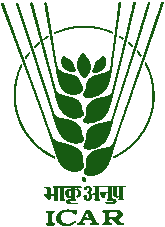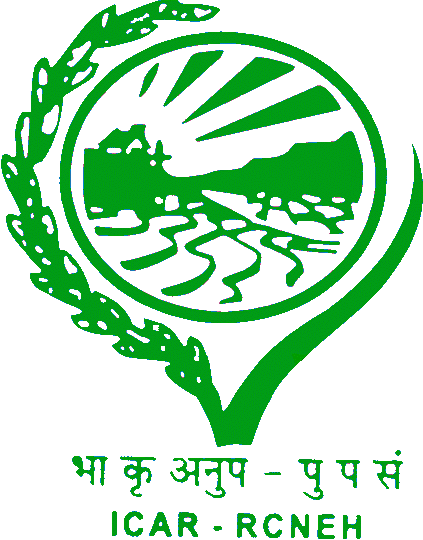
KVKs
There are three Krishi Vigyan Kendras (KVKs) which are under the Administrative control of ICAR, Nagaland Centre.
1) KVK Dimapur
Krishi Vigyan Kendras (KVKs), the innovative science based institutions, were established mainly to impart vocational training to the farmers and field level extension workers. The training programmes are designed to impart the latest knowledge to the farmers through work experience by applying the principles of ‘Teaching by Doing’ and ‘Learning by Doing’. The prime goal of the KVK is to impart training as per the needs and requirements in agriculture and allied enterprises to all the farmers, farm women and farm youths including school drop-outs in the rural area. The effectiveness of the KVK was further enhanced by adding the activities related to on-farm testing and Front-Line Demonstration on major agricultural technologies in order to make the training of farmers location specific, need based and resource-oriented.
2) KVK Wokha
The concept of vocational training in agriculture through Krishi Vigyan Kendras grew substantially as the farmers needed not only knowledge and understanding but also progressively more and more skills in various agricultural operations. The Mohan Singh Mehta Committee (1974) laid down the following concept of KVK. Firstly, the Kendra will impart learning through work experience and hence it does not necessarily require as a precondition of the ability to read and write. Secondly, the Kendra will impart training only to the extension workers who are already employed or to practicing farmers. In other words, the kendras will cater to the needs of those who are already employed or those who wish to be self-employed. Thirdly, there will be no uniform syllabus for a Kendra. The syllabus and programme of each Kendra will be tailored according to the felt needs, natural resources and the potentials for agricultural growth in that area.
The Krishi Vigyan Kendra, Wokha was established in the month of October, 2006. It is situated approximately 11 kms from the main town towards Kohima
3) KVK Longleng
Longleng District, the Home of the Phom Nagas, is the tenth district of Nagaland, formed as a result of bifurcation of Tuensang District. It is bounded by Mon District in the East, Mokokchung District in the west, Sivasagar District (Assam) in the North and Tuensang District in the south. Longleng District is headquartered at Longleng Town (about 1,100m above sea level). Longleng and Tamlu are the major towns of the district. Most of the inhabitants belong to the Phom tribes.
Longleng District is a strip of mountainous territory having no plains and situated in the northern Nagaland. Longleng District is located between longitude 94°E - 95°E and latitude 26°N - 27°N of the Equator. Longleng District has a total area of 1066.80 sq k.m.
Longleng District have One State and 3 District bounderies. On the East it shares boundery with Tuensang and Mon district of Nagaland. On North it has Nagaland’s Inter-State boundary with Assam. On the west it shares boundary with Mokokchung District of Nagaland. On the South it shares boundery with Tuensang and Mokokchung district of Nagaland.
1) KVK Dimapur
Krishi Vigyan Kendras (KVKs), the innovative science based institutions, were established mainly to impart vocational training to the farmers and field level extension workers. The training programmes are designed to impart the latest knowledge to the farmers through work experience by applying the principles of ‘Teaching by Doing’ and ‘Learning by Doing’. The prime goal of the KVK is to impart training as per the needs and requirements in agriculture and allied enterprises to all the farmers, farm women and farm youths including school drop-outs in the rural area. The effectiveness of the KVK was further enhanced by adding the activities related to on-farm testing and Front-Line Demonstration on major agricultural technologies in order to make the training of farmers location specific, need based and resource-oriented.
2) KVK Wokha
The concept of vocational training in agriculture through Krishi Vigyan Kendras grew substantially as the farmers needed not only knowledge and understanding but also progressively more and more skills in various agricultural operations. The Mohan Singh Mehta Committee (1974) laid down the following concept of KVK. Firstly, the Kendra will impart learning through work experience and hence it does not necessarily require as a precondition of the ability to read and write. Secondly, the Kendra will impart training only to the extension workers who are already employed or to practicing farmers. In other words, the kendras will cater to the needs of those who are already employed or those who wish to be self-employed. Thirdly, there will be no uniform syllabus for a Kendra. The syllabus and programme of each Kendra will be tailored according to the felt needs, natural resources and the potentials for agricultural growth in that area.
The Krishi Vigyan Kendra, Wokha was established in the month of October, 2006. It is situated approximately 11 kms from the main town towards Kohima
3) KVK Longleng
Longleng District, the Home of the Phom Nagas, is the tenth district of Nagaland, formed as a result of bifurcation of Tuensang District. It is bounded by Mon District in the East, Mokokchung District in the west, Sivasagar District (Assam) in the North and Tuensang District in the south. Longleng District is headquartered at Longleng Town (about 1,100m above sea level). Longleng and Tamlu are the major towns of the district. Most of the inhabitants belong to the Phom tribes.
Longleng District is a strip of mountainous territory having no plains and situated in the northern Nagaland. Longleng District is located between longitude 94°E - 95°E and latitude 26°N - 27°N of the Equator. Longleng District has a total area of 1066.80 sq k.m.
Longleng District have One State and 3 District bounderies. On the East it shares boundery with Tuensang and Mon district of Nagaland. On North it has Nagaland’s Inter-State boundary with Assam. On the west it shares boundary with Mokokchung District of Nagaland. On the South it shares boundery with Tuensang and Mokokchung district of Nagaland.



